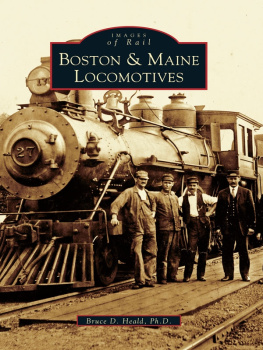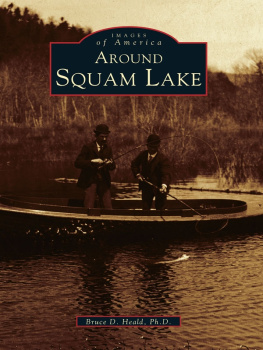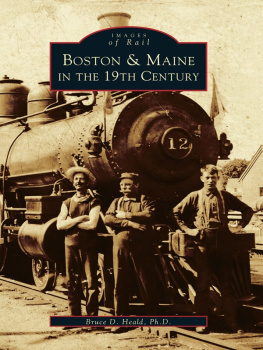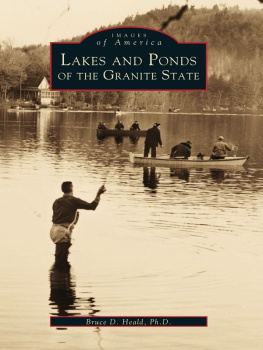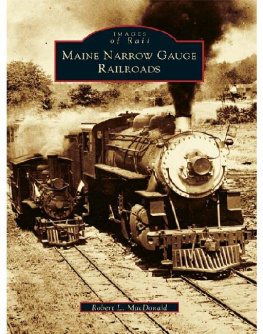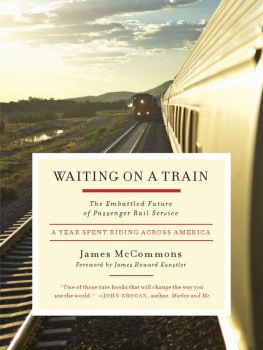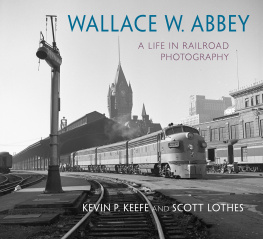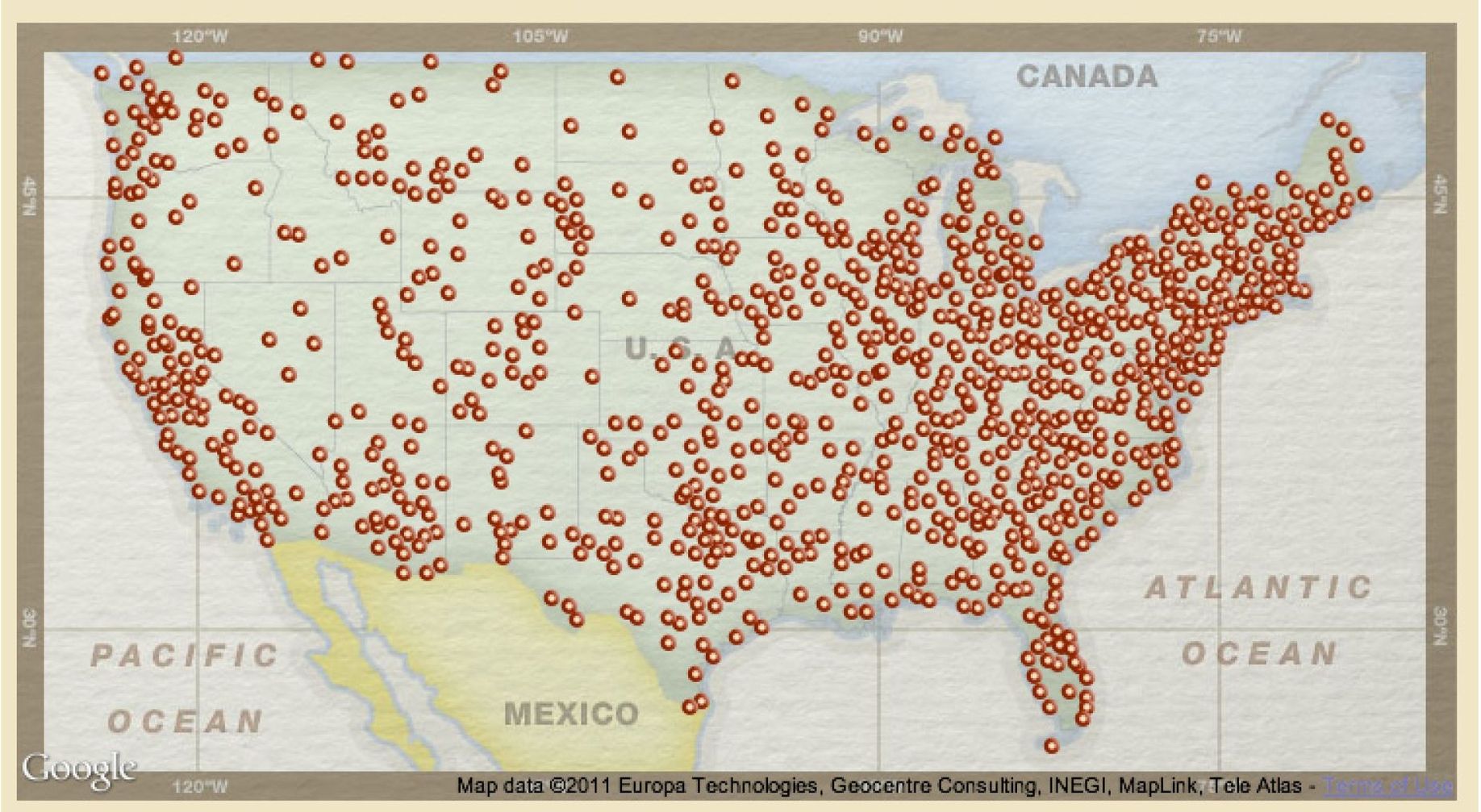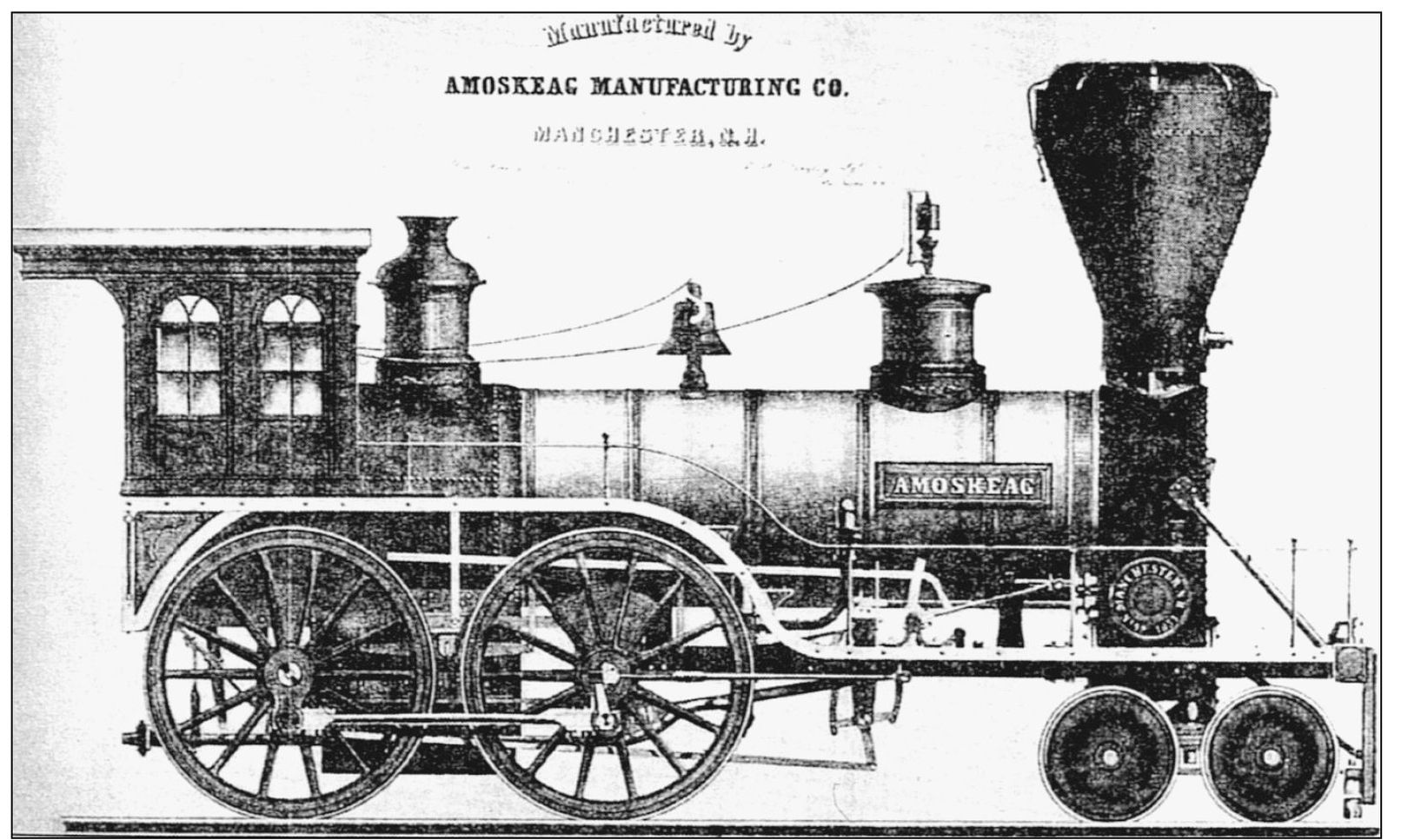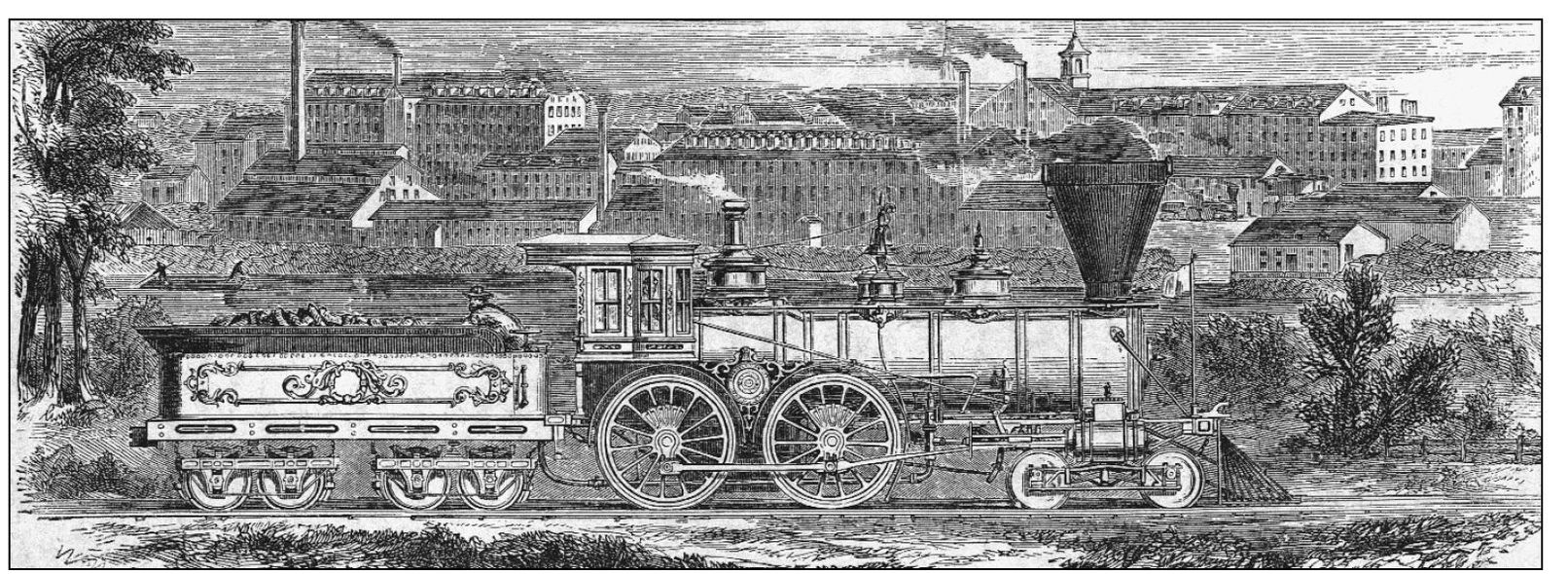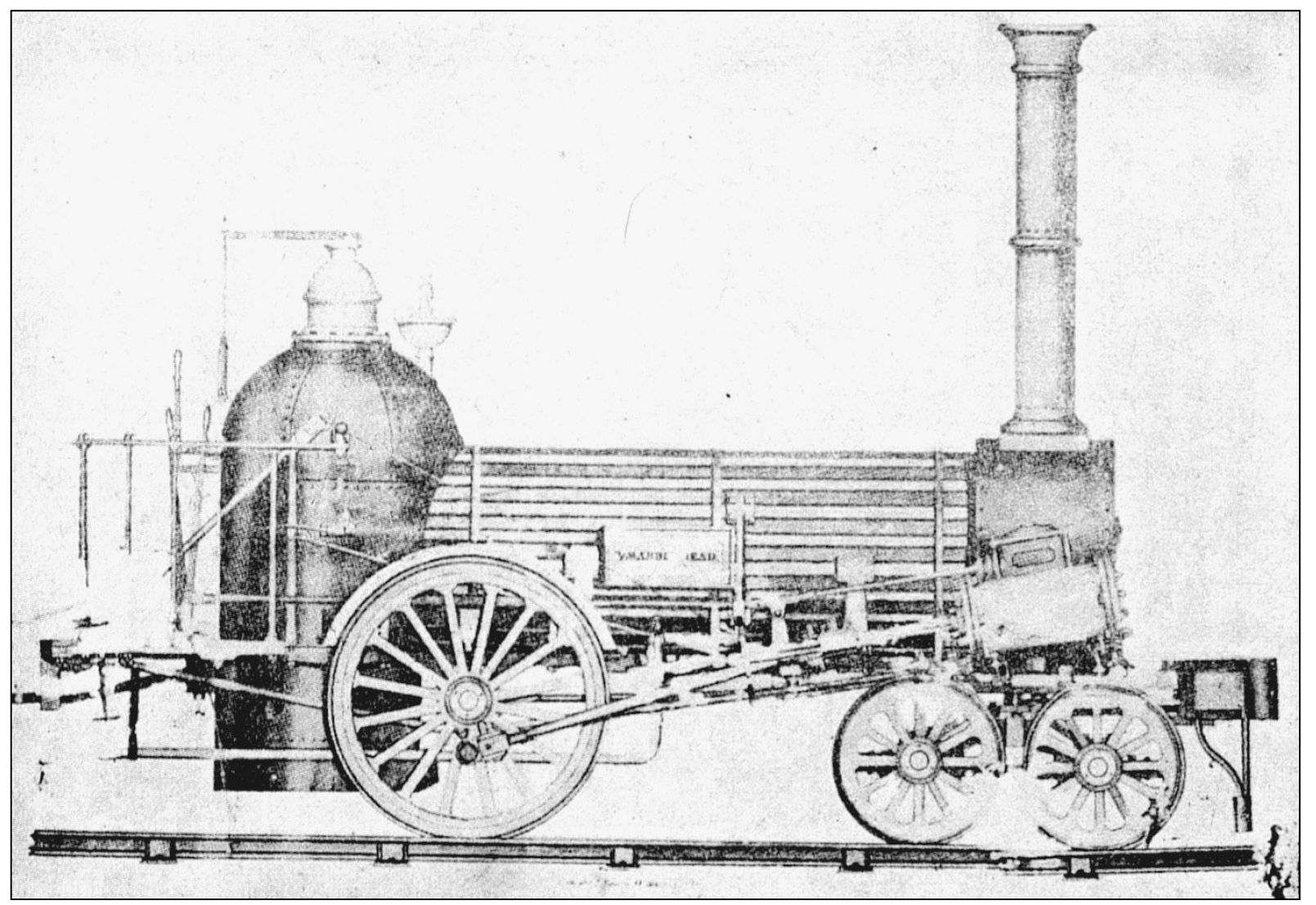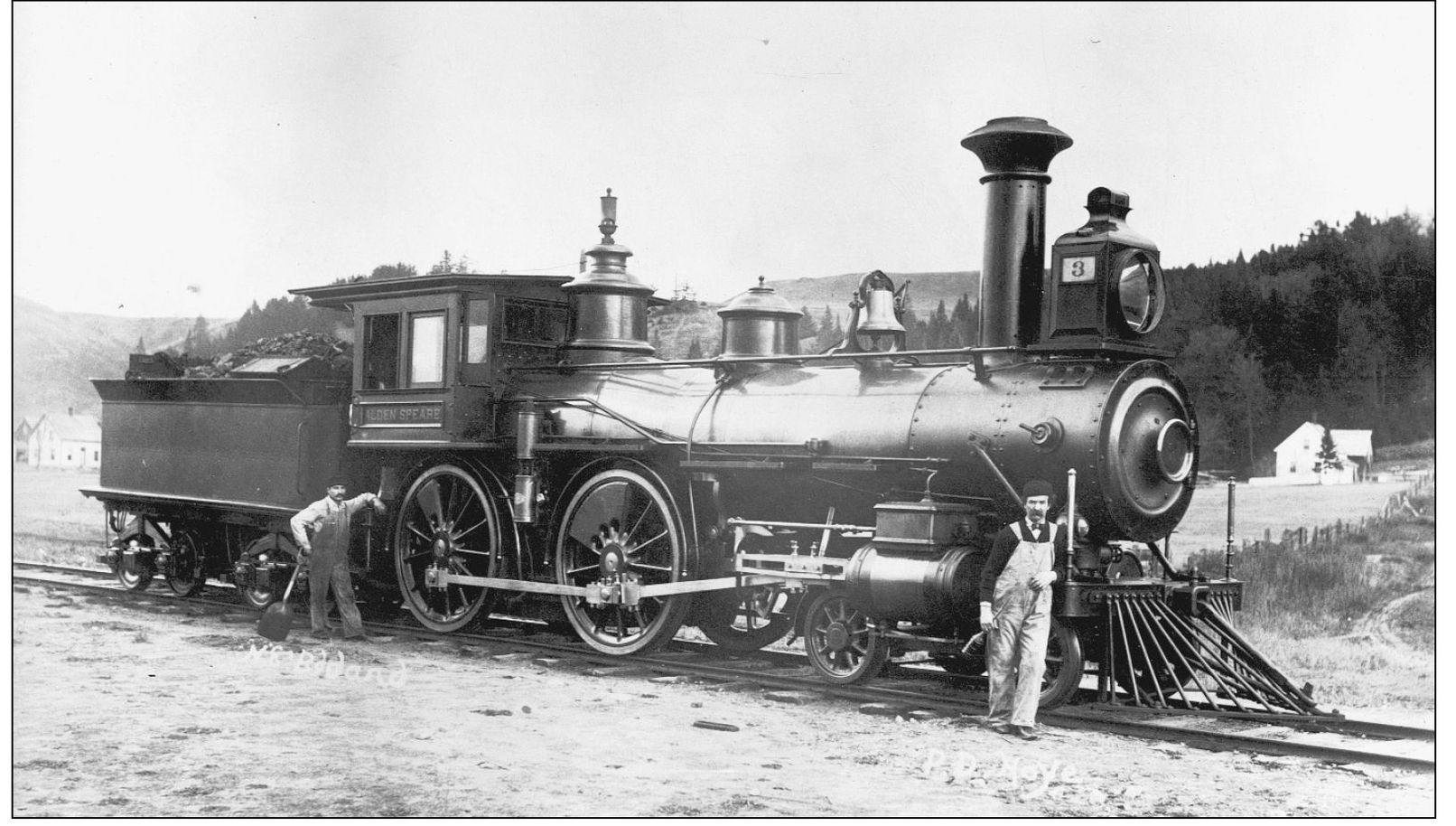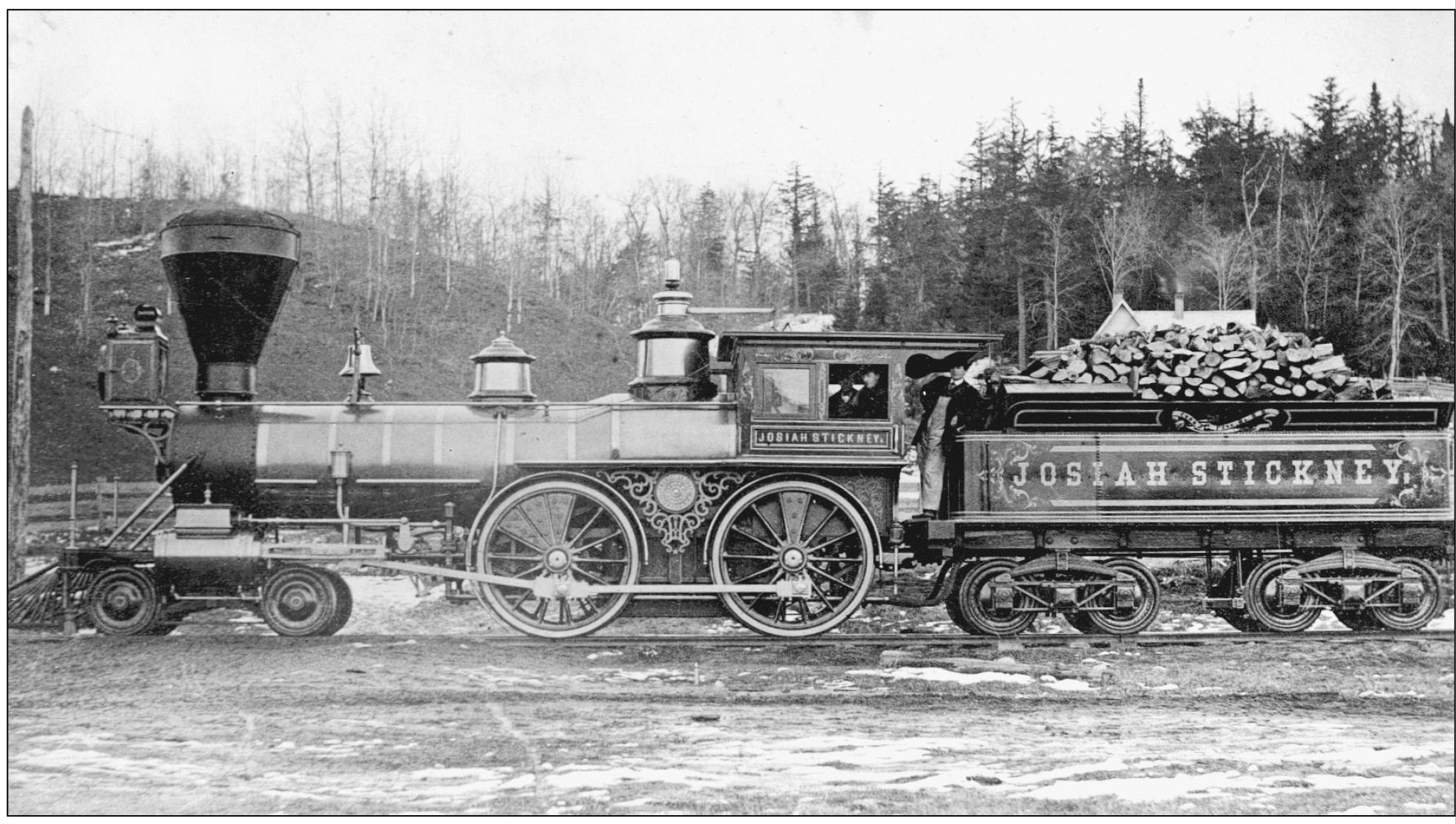One
PREDECESSOR RAILROADS STEAM LOCOMOTIVES
THE LOCOMOTIVE AMOSKEAG (4-4-0). The first line of track reached the capital city of New Hampshire on September 6, 1842, as noted in a Concord Railroad pamphlet: The locomotive Amoskeag with a train of three passenger cars and some baggage, came through from Boston to Concord. Led by Isaac Hill, most of the grantees in the state charter were from Concord. The Honorable Nathaniel G. Upham was the Concord Railroads first superintendent.
Some of the earliest engines used in New England were built by the Amoskeag Manufacturing Company, which built more than 200 locomotives prior to the Civil War. In 1864, however, the firm of Bayley, Blood, and Company of Manchester, New Hampshire, became the Manchester Locomotive Works. Before being purchased by the American Locomotive Company in 1901, the Manchester Locomotive Works built 1,793 engines, usually of the American (4-4-0), the Pacific (4-6-2), or the Mogul (2-6-0) types. In 1873, the Grand Trunk Railroad purchased 60 new locomotives from Manchester when the line converted to standard gauge. Later, the Laconia Car Company manufactured passenger and freight cars, as well as cabooses for steam railroads and trolleys used on the states interurban. In addition to rolling stock, railroads also purchased engines and cars from other manufacturers, including palace cars from the Pullman Company.
THE AMOSKEAG LOCOMOTIVE WORKS, 1855. The Amoskeag Manufacturing Company of Manchester, New Hampshire, was one of the largest companies of its kind in the United States. Its charter empowered it to manufacture woolen, cotton, iron, and other goods. The company was divided into five distinct departments: the Land and Water-Power Company, Amoskeag New Mills, Amoskeag Machine Shop and Locomotive Works, the Amoskeag Batting Mill, and the Hooksett Company. The founding of the works dated from c. 1840. The New Hampshire General Court later authorized the Amoskeag Manufacturing Company of Manchester to hold stock in the Concord Railroad.
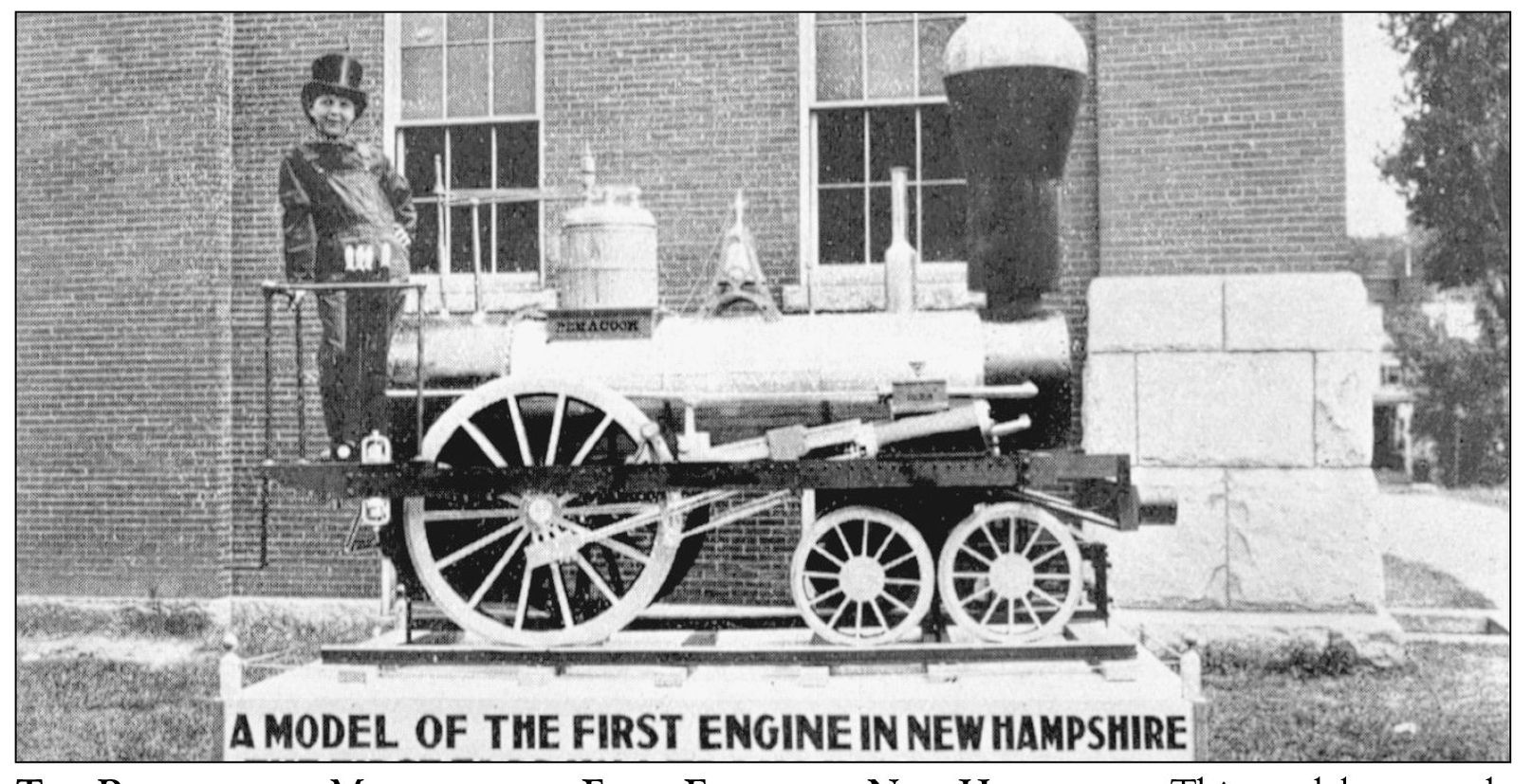
THE PENACOOK, A MODEL OF THE FIRST ENGINE IN NEW HAMPSHIRE. This model was made by the pupils in the Morrill School of Mechanic Arts. At the very outset of the railroad age, New England lacked locomotive works. Thus, its railroads were compelled to import their engines. Like their contemporaries elsewhere in America, they turned to English makers, among whom the Stephensons were the most prominent. Stephenson locomotives ran in Maine upon the Bangor and Piscataquis Railroads. In Massachusetts, they were the first engines upon each of the pioneer three railroads. In 1835, as the regions first lines were opening, two of the most famous builders in America, M.W. Baldwin and William Norris, had erected their works in the Midatlantic states. By the end of 1836, the last of the big three, Rogers, Ketchum, and Grosvenor, had announced themselves ready to build locomotives for Rogers Locomotive Works and tenders at their shop in Paterson, New Jersey. By 1838, the combined locomotive roster for all New England lines was 45. Of this number, 8 were American locomotives built outside New England, 12 were imported from Great Britain, and the remaining 25 were built in New England shops.
NASHUA & LOWELL RAILROAD, THE LION, 1844. By 1840, the foresighted engineers were becoming aware that different traffics required engines of different characters: passenger transportation, speed, convenience, and comfort were the desiderataall drawn by light engines with large drivers. In the transport of freight, there were obvious economics in fuel and repair, with long trains being pulled at slower speeds with more powerful engines.
It seems that the experts in the field of locomotive history are unable to agree upon the characteristics or the types of these earlier locomotive immigrants. Neither their models nor engines survive, and the technical accuracy of available pictures is usually conjectural. According to Bulletin of the Railway and Locomotive Historical Society, so wide a latitude is given for interpretation that the first Stevenson for the Boston and Lowell has been identified as a Samson type, a Northumbrian type, and a Planet type. However, there seems to be little doubt that the Planet type in the 1830s became the favorite pattern for the New England roads.
THE MARBLEHEAD, NO. 5. The Marblehead was built in Philadelphia in 1839 by William Norris. Its total weight was only 18,000 pounds, and the diameter of the single driver was but four and a half feet. This information is taken from an imperfect but supposedly unique lithograph by J.T. Brown, Philadelphia, Pennsylvania.
CONCORD, PORTLAND & ROCHESTER RAILROAD NO. 3 , THE ALDEN SPEARE (4-4-0), 16- BY 24-INCH CYLINDERS, 56-INCH DRIVERS. This locomotive was built by the Concord, Portland & Rochester Railroad in 1884. All the early locomotives of the road were named and ornamented. The tenders and cabs were decorated with some fancy scroll designs.
CONCORD, PORTLAND & ROCHESTER RAILROAD NO. 12, THE JOSIAH STICKNEY (4-4-0), 16- BY 24-INCH CYLINDERS, 56-INCH DRIVERS. Built by the Concord, Portland & Rochester Railroad in 1868, the Josiah Stickney was retired by the Boston & Maine in 1894. New American features were developed through these early locomotives. One of these features was the lead trunk of four wheels connected to the engine frame by a swivel. This device served for the locomotive the same function that it did for long cars. At this time, the number of drivers was doubled, and the rear pair was driven by rods coupled to the forward two. This was an innovation that is generally attributed to Henry R. Campbell.

